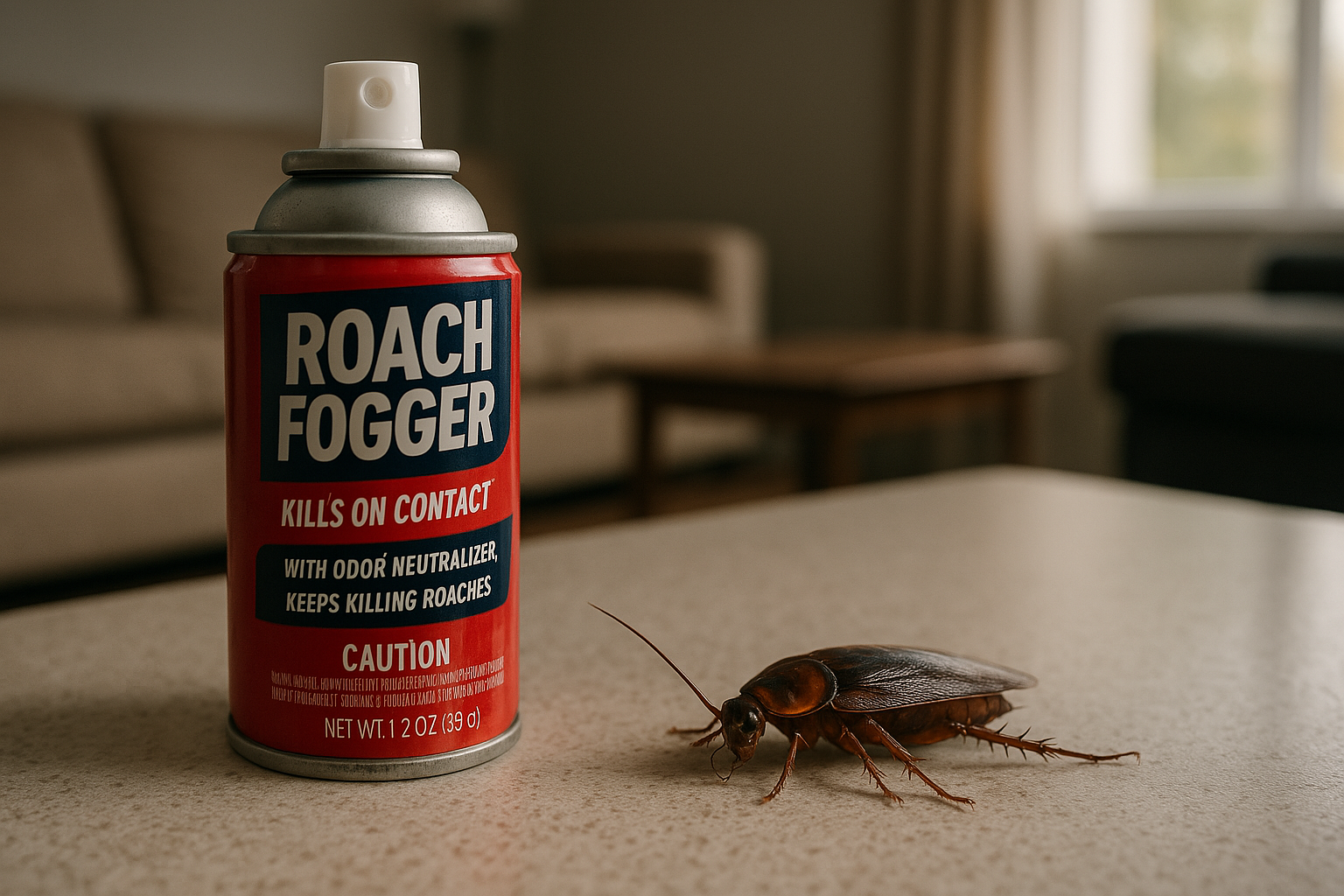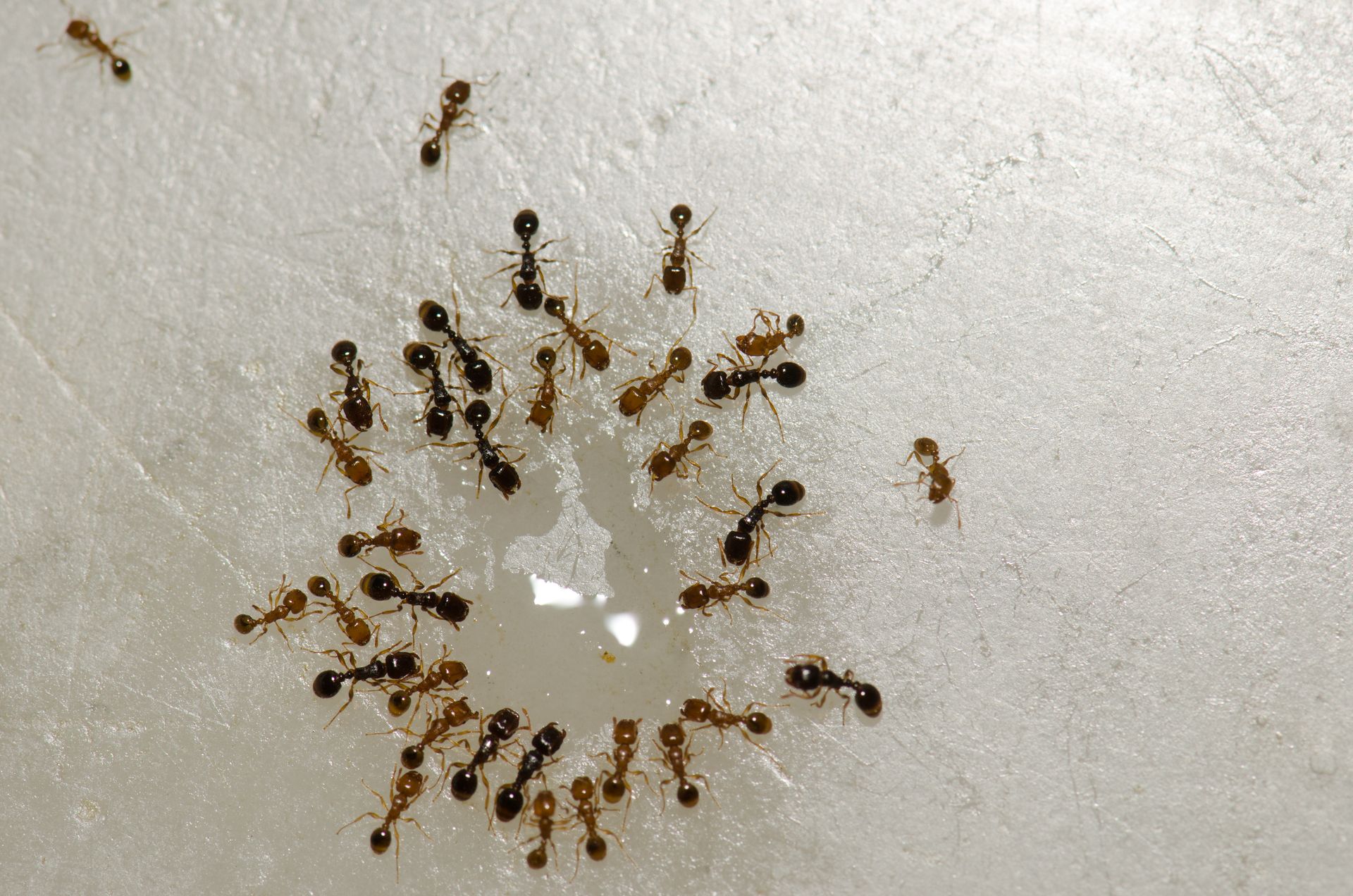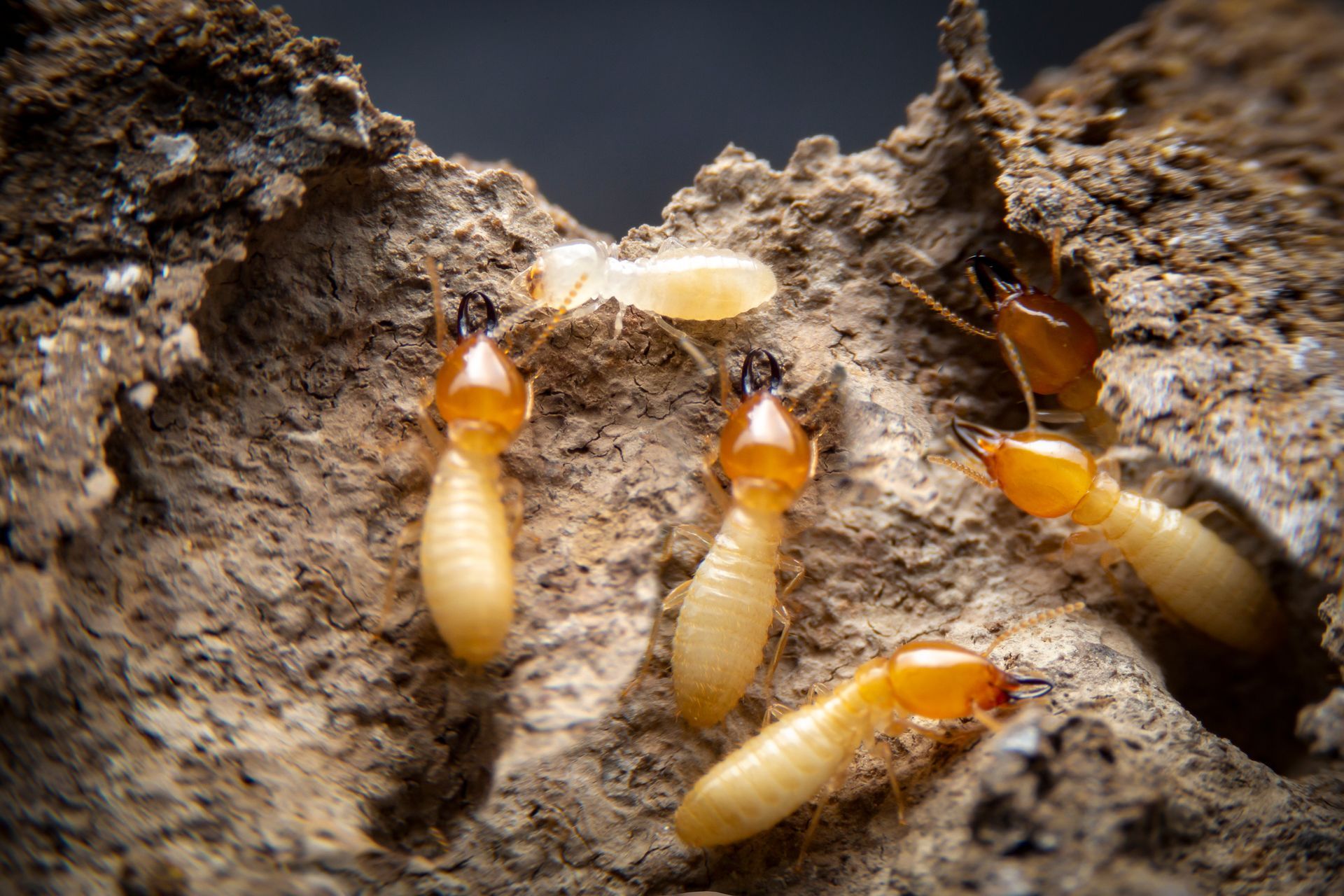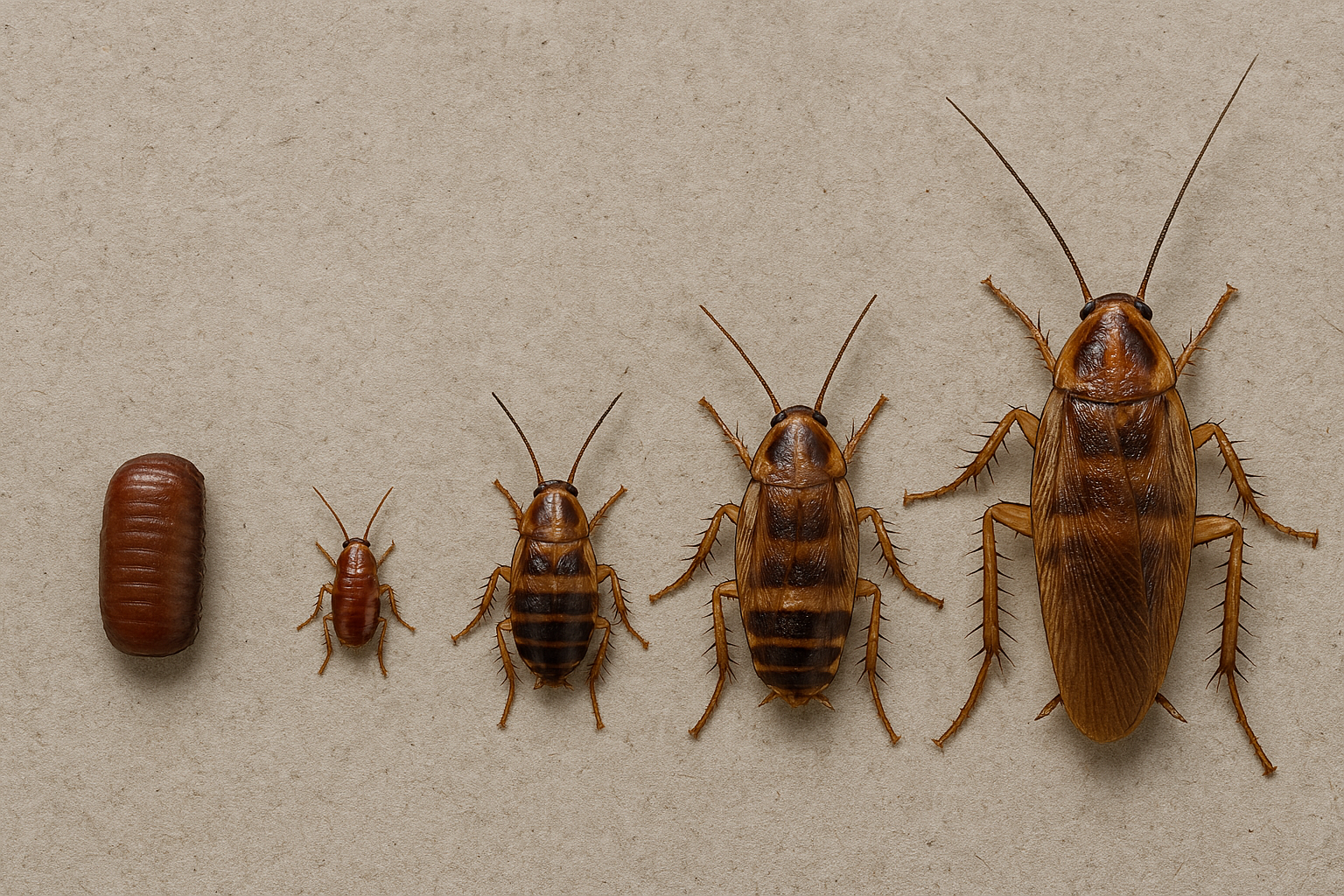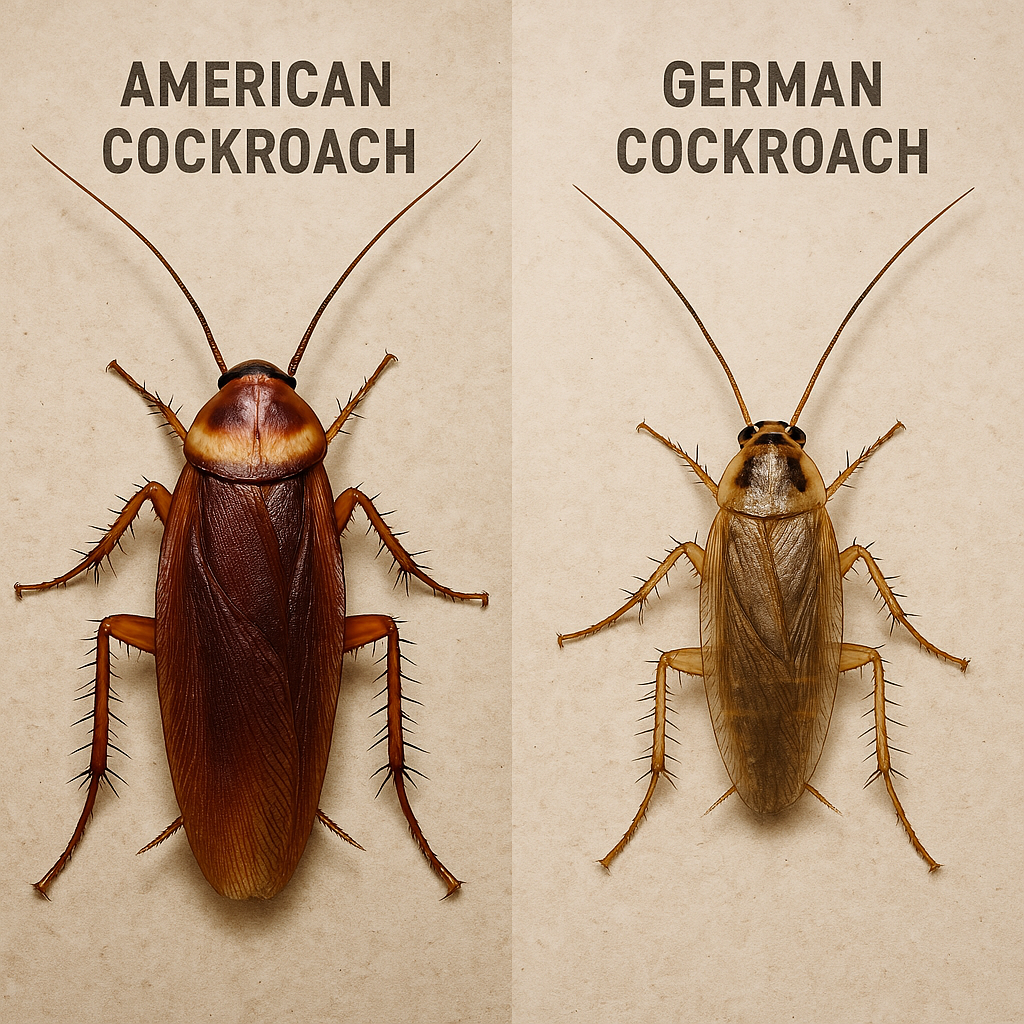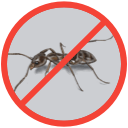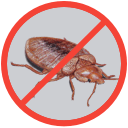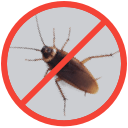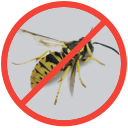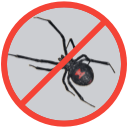Are Fire Ants Dangerous? Understanding Fire Ant Risks & Safety
Fire ants pack a powerful punch that goes far beyond their tiny size. These aggressive insects deliver painful stings that can trigger severe allergic reactions, cause significant property damage, and even prove fatal in rare cases. With their rapid spread across the southern United States affecting millions of homeowners, understanding the real dangers fire ants pose has become essential for protecting your family, pets, and property.
The Truth About Fire Ant Dangers

Why Fire Ants Are Considered Dangerous
Fire ants earned their fearsome reputation through a combination of aggressive behavior, potent venom, and their tendency to attack in large numbers. Unlike many other ant species that flee when disturbed, fire ants immediately mobilize to defend their colony with coordinated attacks [1].
Their danger stems from multiple factors working together. First, fire ants possess a unique double weapon system where they bite to anchor themselves, then inject venom through a separate stinger [2]. This allows them to sting repeatedly without losing their stinger, unlike honeybees. Second, their venom contains a toxic cocktail of alkaloids and proteins that can trigger reactions ranging from intense burning pain to life threatening anaphylaxis [3]. Third, their coordinated attack pattern means victims often receive dozens or even hundreds of stings within minutes of swarming [4].
Fire Ants vs. Regular Ants: Key Differences
While many ant species can bite or sting, fire ants stand apart in their level of threat. Common ant species generally flee from danger and only use defensive attacks when cornered or handled. Fire ants aggressively defend their mound when disturbed, with workers rapidly swarming from underground tunnels that can extend 5-20 feet from the mound [5].
The physical differences are equally striking. Fire ants display a distinctive reddish brown to reddish black coloration and measure between 1/8 to 1/4 inch in length. Their bodies feature a pronounced two segment waist (petiole) between the thorax and abdomen, and their antennae end in a distinctive two segmented club. Most notably, fire ant workers within a single colony vary significantly in size which is a characteristic called polymorphism that helps distinguish them from native ant species.
Statistics on Fire Ant Injuries and Deaths
Statistical data reveals concerning patterns about these invasive insects throughout American regions. Fire ants sting approximately 14 million people annually in the United States [6]. More concerning, fatalities from fire ant stings, while rare, do occur with at least 80 deaths documented in the United States since their introduction [7].
The economic toll matches the human cost. The USDA estimates that fire ants cause over $8.75 billion in damage and control costs annually in the United States alone, affecting everything from agricultural operations to electrical infrastructure [8].
Understanding Fire Ant Behavior and Aggression
Why Fire Ants Attack
Fire ants don't sting randomly. Their attacks follow predictable patterns rooted in colony defense. These insects view any vibration, shadow, or disturbance near their mound as a potential threat to their queen and larvae. This defensive instinct triggers an immediate response that can escalate from a few scouts to hundreds of workers within seconds. The attack begins when worker ants detect a threat. Once alerted, fire ants release alarm pheromones that rapidly recruit nestmates to join the attack.
Swarming Behavior Explained
Fire ant swarming represents one of nature's most coordinated defensive responses. Disrupting their nests triggers mass emergence as thousands rush forward in organized, rapid formations. The swarm follows a specific pattern. Scout ants emerge first, quickly assessing the threat. If they encounter an intruder, they immediately release alarm pheromones while beginning to climb and sting. These chemical signals act like a rallying cry, drawing more worker ants from deep within the colony. Within 10-20 seconds, hundreds of ants can emerge, all primed to attack.
Multiple Sting Pattern
The fire ant's ability to deliver multiple stings sets them apart from other stinging insects. Using their mandibles to grip the skin, fire ants arch their bodies and drive their stingers in repeatedly, often rotating in a circular pattern. This creates the characteristic circular or semicircular pattern of stings that doctors use to identify fire ant attacks.
A single fire ant can sting multiple times in rapid succession, injecting venom with each strike. When multiplied across dozens or hundreds of attacking ants, victims can receive massive venom doses within seconds. This overwhelming assault explains why fire ant attacks can quickly become medical emergencies, especially for children, elderly individuals, or those with compromised immune systems.
Painful Stings: What Makes Fire Ant Venom Unique
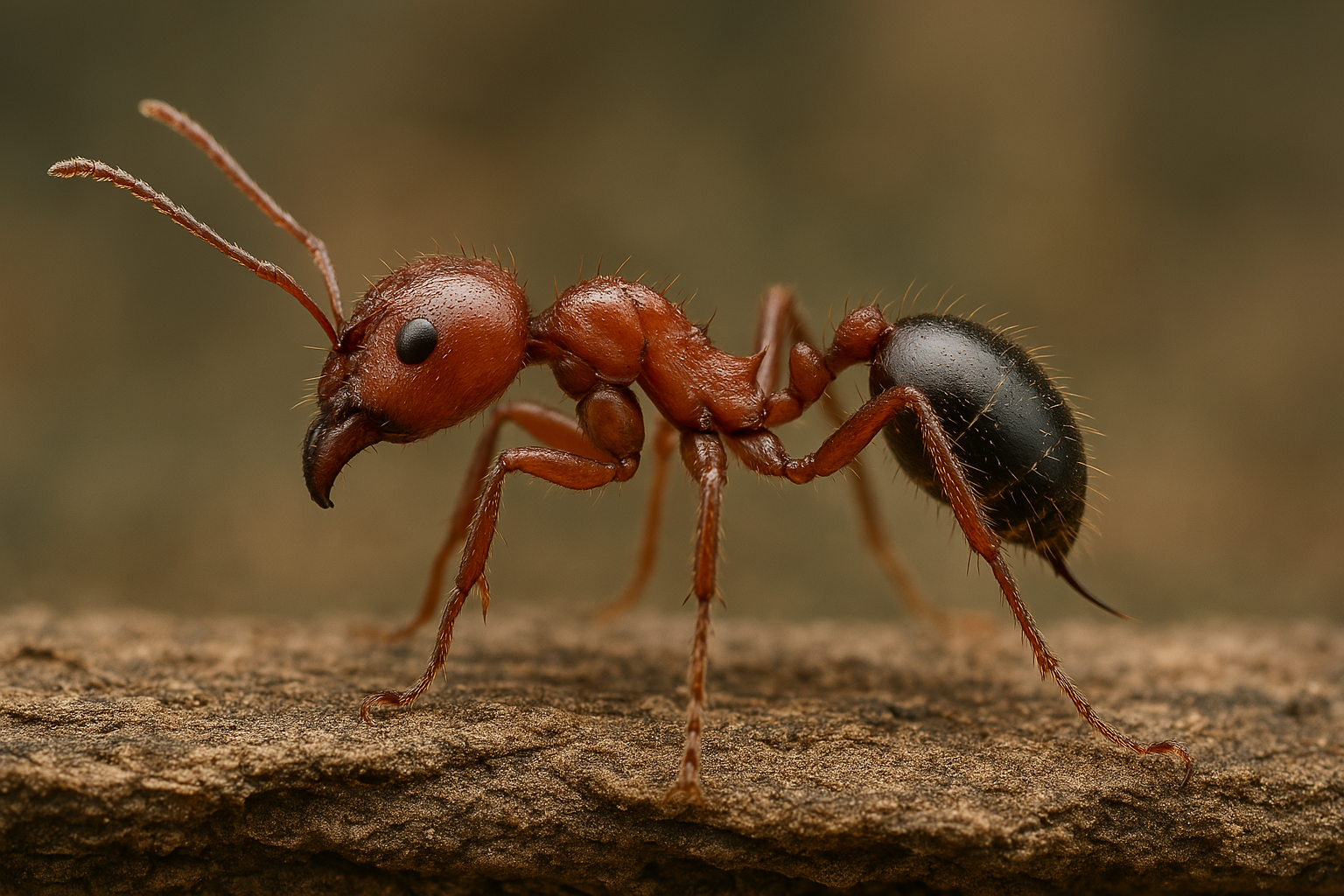
Chemical Composition of Fire Ant Venom
Fire ant venom represents a sophisticated chemical weapon unlike any other insect venom. The venom consists of over 95% alkaloids, specifically piperidine alkaloids called solenopsins, with roughly less than 1% aqueous proteins [9]. This unique composition explains both the immediate burning sensation and the delayed allergic reactions that characterize fire ant stings.
The alkaloid component, primarily composed of 2-methyl-6-alkylpiperidines, creates the immediate burning pain and subsequent pustule formation [10]. These compounds demonstrate cytotoxic properties, directly damaging cell membranes and causing localized tissue death. The remaining protein fraction contains the allergenic components responsible for triggering systemic allergic reactions and anaphylaxis in sensitive individuals [11].
The Burning Sensation Explained
Their venom contains alkaloid solenopsins that trigger pain receptors and damage cells upon injection [12]. These compounds create an immediate inflammatory response, triggering pain receptors while simultaneously damaging local tissue. The sensation has been compared to touching a hot match, hence the name "fire" ant.
This burning typically peaks within 1-2 minutes of the sting and can persist for 30 minutes to several hours. Pain levels correspond with both toxin volume delivered and total attack sites sustained. Multiple stings create overlapping pain fields, potentially overwhelming the nervous system's ability to process pain signals accurately.
How Venom Affects the Body
Fire ant venom affects multiple body systems beyond the immediate sting site. The alkaloid components demonstrate hemolytic properties, meaning they can rupture red blood cells [13]. They also exhibit neurotoxic effects, potentially affecting nerve signal transmission. In laboratory studies, solenopsins have shown antimicrobial, insecticidal, and even anti-cancer properties, highlighting their biological potency [14].
The venom's cytotoxic properties explain the unique pustule formation following fire ant stings [15]. As alkaloids destroy local tissue, the body responds by sending white blood cells to the area. Small fluid filled bumps develop within one to two days, containing cell debris from the body's response.
Cytotoxic and Hemolytic Properties
The cytotoxic effects of fire ant venom extend beyond simple tissue irritation. Solenopsins integrate into cell membranes, disrupting their integrity and causing cell death. This process particularly affects rapidly dividing cells, which explains why fire ant stings can delay wound healing and increase infection risk if the pustules rupture.
The hemolytic properties, while less pronounced than the cytotoxic effects, contribute to the systemic symptoms some victims experience. Multiple fire ant stings can cause systemic symptoms including dizziness and weakness, and in rare cases, kidney complications have been documented [16].
Immediate Symptoms of Fire Ant Stings

The Initial Sting Experience
Initial contact produces sharp, fiery sensations that instantly alert victims to the attack. This initial sensation differs markedly from bee or wasp stings. Rather than a sharp, piercing pain, fire ant stings create a burning, almost electrical sensation that radiates from the sting site.
Within seconds, the sting site begins to change. A small red spot appears, quickly developing into a raised welt. The surrounding skin may blanch (turn white) as blood vessels constrict in response to the venom. This immediate reaction helps medical professionals distinguish fire ant stings from other insect bites or stings.
Wheal and Flare Response
The wheal and flare response represents the body's immediate reaction to fire ant venom. Within 15-30 minutes, a raised, reddish bump (wheal) forms at each sting site, surrounded by a larger area of redness (flare). This reaction results from histamine release and increased blood vessel permeability at the sting site.
The wheal typically measures 3-5 millimeters in diameter, though it can expand larger in individuals with heightened sensitivity. The surrounding flare often extends 1-2 centimeters from the central wheal. This response peaks within 1-2 hours and then gradually subsides, though the central wheal may persist for 24 hours or longer.
Pustule Formation Timeline
Distinctive blister development occurs through consistent stages after envenomation. Within 24 hours of the initial sting, the central wheal transforms into a pustule filled with a yellowish white fluid [17]. This isn't infection; rather, it's a collection of dead tissue and white blood cells killed by the venom's cytotoxic effects.
These pustules typically measure 2-5 millimeters in diameter and may persist for 3-10 days. Severe irritation tempts victims to scratch, though doing so risks introducing harmful bacteria. The pustules eventually rupture or reabsorb, often leaving temporary discoloration or, in some cases, small permanent scars.
Pain and Itching Duration
The pain progression from fire ant stings follows a biphasic pattern. The initial burning pain typically subsides within 30-60 minutes, replaced by a dull aching sensation. This secondary pain phase can persist for several hours to days, depending on the number of stings and individual sensitivity.
Itching presents the most persistent symptom, often lasting 7-14 days. The itch intensifies as pustules form and can become nearly unbearable, particularly at night. This prolonged itching results from ongoing inflammatory processes and histamine release at the sting sites. Managing this itch becomes crucial for preventing secondary infections from scratching.
Normal vs. Severe Reactions
Understanding the difference between normal and severe reactions can be lifesaving. Normal reactions remain localized to the sting sites and include pain, swelling, pustule formation, and itching. These symptoms, while uncomfortable, don't indicate a medical emergency.
Severe reactions extend beyond the sting sites. Large local reactions involve swelling that extends more than 10 centimeters from the sting site and may affect entire limbs. Systemic reactions include symptoms affecting other body systems: widespread hives, difficulty breathing, dizziness, nausea, or rapid pulse. These reactions require immediate medical attention as they may progress to anaphylaxis.
Allergic Reactions: From Mild to Life Threatening
Local Allergic Reactions
Fire ant stings cause various reactions in endemic areas, with approximately 20% of stings resulting in large local reactions beyond the typical pustule, and 0.5-2% causing systemic allergic reactions that can range from skin symptoms to life threatening anaphylaxis [18]. These reactions involve exaggerated responses at and around the sting sites but don't affect other body systems.
Large local reactions represent the most common allergic response. Instead of swelling limited to the immediate sting area, these reactions produce expanding areas of redness and swelling that can encompass entire body segments. A sting on the ankle might result in swelling extending to the knee, while hand stings could cause the entire arm to swell.
Systemic Allergic Reactions
Systemic reactions affect body systems beyond the sting site and indicate a more serious allergic response. These reactions typically begin within minutes to hours after the sting and may include skin symptoms (hives, flushing), respiratory symptoms (wheezing, throat tightness), gastrointestinal symptoms (nausea, cramping), or cardiovascular symptoms (rapid pulse, dizziness).
The progression from local to systemic reactions can occur rapidly. Approximately 2% of fire ant sting victims experience systemic reactions, with reactions typically more severe in individuals with prior sensitization [19]. These reactions require immediate medical evaluation as they may progress to anaphylaxis.
Anaphylaxis: The Most Severe Reaction
Systemic allergic responses pose extreme danger requiring immediate emergency intervention. This whole body allergic reaction can develop within minutes of being stung and requires immediate emergency treatment. In the southern United States where fire ants are endemic, they have become a significant health hazard and may be the number one agent of insect stings, with extremely high exposure rates leading to widespread sensitization in the population.
Anaphylactic reactions to fire ant stings follow a rapid progression. Initial symptoms may include tingling sensations, metallic taste, or anxiety. These quickly progress to more severe symptoms: throat swelling, difficulty breathing, rapid drop in blood pressure, and loss of consciousness. Without prompt treatment with epinephrine, anaphylaxis can be fatal.
Impact on Humans, Animals, and Ecosystems
Dangers to Children and Elderly
Children face heightened risks from fire ant attacks due to their smaller body size, developing immune systems, and behavioral factors. A child playing in a yard may unknowingly disturb a mound and receive numerous stings before adults can intervene. The higher venom to body weight ratio in children means that even a moderate number of stings can cause severe systemic reactions.
Senior citizens encounter unique hazards when movement restrictions hinder their ability to flee aggressive swarms. Compromised immune systems and underlying health conditions can amplify reaction severity. Studies have documented numerous cases of elderly individuals in care facilities suffering severe or fatal fire ant attacks when unable to move away from attacking ants [20].
Fire Ants and Pet Safety
Pets face significant dangers from fire ants, often suffering more severe consequences than humans due to their inability to quickly remove attacking ants. Dogs investigating mounds with their noses frequently receive multiple stings to sensitive facial areas. Cats, despite their agility, can fall victim when fire ants invade food bowls or resting areas.
Small pets and young animals face the greatest risks. Puppies and kittens may experience severe reactions from relatively few stings due to their small size. Fire ants have been documented killing newborn livestock, attacking pets' eyes and mucous membranes, and causing severe allergic reactions in sensitive animals. Pet owners should inspect yards thoroughly and watch for nest indicators before releasing pets outdoors.
Agricultural and Economic Damage
Fire ants inflict staggering agricultural losses across their range. The USDA estimates annual agricultural losses at $750 million, with livestock operations bearing significant costs [21]. Fire ants attack newborn calves, piglets, and poultry, sometimes killing them or causing injuries that reduce market value. They damage feed supplies, interfere with hay harvesting, and create hazards for farm workers.
Crop damage extends beyond direct consumption. Fire ants tend aphids and other plant pests, protecting them from beneficial predators in exchange for honeydew. This relationship amplifies crop damage and complicates pest management strategies. These pests compromise water delivery networks, agricultural machinery, and power infrastructure, increasing business expenses.
Environmental Impact on Native Species
The ecological impact of fire ants extends throughout invaded ecosystems. These aggressive invaders displace native ant species, disrupting established ecological relationships. Studies show up to 70% reduction in native ant diversity in heavily infested areas [22].
Ground nesting birds suffer particularly severe impacts. Fire ants attack nestlings and interfere with parental feeding, contributing to population declines in species like bobwhite quail. Reptiles and amphibians also fall victim. The cascading effects of these disruptions alter entire ecosystem functioning.
High Risk Situations and Vulnerable Populations
Who's Most at Risk?
Certain populations face elevated risks from fire ant encounters due to physical, behavioral, or occupational factors.

- Infants and toddlers cannot escape attacking ants and may not communicate distress effectively. Their developing immune systems may react more severely to venom, and their small body size means fewer stings can cause systemic reactions.
- Individuals with mobility limitations, whether from disability, injury, or medical conditions, face increased exposure risk. Those unable to quickly move away from disturbed mounds may receive hundreds of stings. Wheelchair users may unknowingly position themselves near mounds, while individuals with sensory impairments might not detect attacking ants until severe stinging occurs.
- Outdoor workers represent another high risk group. Landscapers, utility workers, agricultural employees, and construction crews frequently encounter fire ants during routine activities. The nature of their work includes disturbing soil, moving equipment, working in confined spaces which increases exposure risk. Studies show these workers experience fire ant stings at rates far exceeding the general population.
Geographic Risk Areas
Fire ant risk varies dramatically by geographic location within their established range. The highest risk areas include central Texas, Louisiana, Mississippi, Alabama, Georgia, and Florida, where both red and black imported fire ants have established dense populations. These states report the most fire ant related medical incidents and fatalities.
Intermediate danger zones encompass border regions where populations establish but haven't fully saturated. While fire ant densities remain lower, warming temperatures and continued spread increase encounter risks. California represents a unique situation with isolated but expanding populations requiring aggressive control efforts.
Emerging risk areas deserve special attention. Fire ants continue expanding northward and westward, with recent establishments in Virginia and Kentucky. Climate change models suggest potential expansion into previously unsuitable regions [23]. Residents in these expansion zones often lack awareness of fire ant dangers, potentially increasing injury risk during initial invasions.
First Aid and Medical Treatment
Immediate First Aid Steps
This content serves informational needs but cannot substitute qualified healthcare guidance. For severe reactions or medical emergencies, call 911 immediately.
Prompt response after attacks reduces symptom intensity and avoids additional problems. First, move away from the attack area immediately because fire ants may continue emerging from disturbed mounds for several minutes. Brush off any remaining ants quickly but avoid crushing them against the skin, as this may trigger additional stinging.
Remove any clothing or jewelry near sting sites before swelling begins. Cleanse attack sites using mild cleanser and cold water, eliminating toxin traces while preventing bacterial entry. Apply cold compresses or ice packs wrapped in cloth for 10-minute intervals to reduce pain and swelling. Raise injured extremities above heart level when feasible to control fluid accumulation.
When to Seek Emergency Care
Certain symptoms following fire ant stings require immediate emergency medical attention. Call 911 if the victim experiences difficulty breathing, throat swelling, rapid pulse, dizziness, widespread hives, nausea and vomiting, or loss of consciousness. These symptoms indicate potential anaphylaxis requiring immediate treatment.
Seek urgent medical care for extensive stinging (more than 50 stings in adults or 20 in children), stings in sensitive areas (mouth, throat, eyes), signs of infection at sting sites, or reactions in individuals with known insect allergies. Young children, elderly individuals, and those with compromised immune systems should receive medical evaluation for multiple stings even without severe symptoms.
Medical Treatment Options
Always consult with healthcare providers for appropriate treatment. This material provides general knowledge without offering medical recommendations.
Medical treatment for fire ant stings varies based on reaction severity. For localized reactions, physicians may prescribe oral antihistamines to reduce itching and inflammation, topical corticosteroids to minimize local inflammatory responses, and oral pain medications for comfort. Secondary infections may require antibiotic treatment.
Systemic reactions require more aggressive intervention. Treatment may include injectable antihistamines and corticosteroids, bronchodilators for respiratory symptoms, intravenous fluids for blood pressure support, and cardiac monitoring. Individuals with severe reactions typically receive prescriptions for epinephrine auto injectors and referrals to allergists for comprehensive evaluation and potential immunotherapy.
Long term Care for Sting Sites
Proper long term care prevents complications and minimizes scarring from fire ant stings. Resist scratching despite intense itching and trim fingernails short and consider wearing gloves at night. Keep pustules intact; they protect underlying tissue while healing. If pustules rupture, clean gently with soap and water, applying antibiotic ointment only if signs of infection develop.
Monitor sting sites for signs of secondary infection: increasing pain, spreading redness, warmth, red streaks, or pus discharge. These symptoms require medical evaluation and antibiotic treatment. Protect healing sting sites from sun exposure to prevent hyperpigmentation. Some individuals develop small scars or darkened spots that may persist for months after healing.
Prevention and Safety Measures
Identifying Fire Ant Mounds
Learning to recognize fire ant mounds provides the first line of defense against attacks. Fire ant mounds differ distinctly from other ant nests because they lack visible entrance holes on top, instead featuring underground tunnels for entry and exit. Fresh mounds appear as loose soil piles, while established mounds develop harder, dome shaped structures.
Mound characteristics vary with soil conditions and weather. In clay soils, mounds grow tall and distinct, sometimes reaching 18 inches high. Sandy soils produce flatter, less obvious mounds that blend with surroundings. After rain, fire ants often build new mounds or repair existing ones, making post storm periods particularly hazardous.
Active mounds show subtle signs of occupation. Look for small soil particles around the mound base indicating recent excavation. During warm weather, observe from a safe distance for ant activity near mound edges. Remember that fire ants often build satellite mounds connected by underground tunnels, so finding one mound suggests others nearby.

Protective Clothing and Footwear
Proper clothing provides essential protection in fire ant territories. Closed toe shoes offer basic protection, but rubber boots tucked into pants provide superior defense. Fire ants cannot sting through most shoe materials but quickly climb exposed skin. Thick socks pulled over pant cuffs create an additional barrier.
Light colored clothing helps spot climbing ants before they reach skin. Loose fitting garments prove problematic as ants can become trapped against skin, increasing sting likelihood. For high risk activities like gardening or lawn work, consider additional protection. Gloves prevent hand stings when working near the ground. Long sleeves tucked into gloves protect arms. Some individuals in heavily infested areas apply petroleum jelly or talcum powder to shoe tops and pants cuffs as additional barriers.
Property Management Strategies
Effective property management reduces fire ant populations and encounter risks. Regular lawn mowing helps identify new mounds before they become established. Maintain vegetation free zones around play areas, walkways, and home foundations where family members frequently travel.
Eliminate attractants that draw fire ants near homes. Fix leaking outdoor faucets and irrigation systems because fire ants need moisture and often build mounds near water sources. Remove pet food after feeding and clean up food spills promptly. Store garbage in sealed containers and maintain clean outdoor eating areas.
Consider landscape modifications in severely infested areas. Replace mulch near homes with gravel or rubber mulch less attractive to fire ants. Create barrier zones using materials fire ants avoid. Regular property inspections, especially after rain, help identify new colonies before they expand.
Teaching Children About Fire Ant Safety
Educating children about fire ant dangers requires age appropriate strategies balancing awareness with avoiding excessive fear. For young children, use simple rules: "Stay away from dirt mounds," "Tell adults if you see ants," and "Don't play near ant hills." Practice identifying fire ant mounds during supervised outdoor time.
Older children can understand more complex safety concepts. Teach them to scan play areas before activities, recognize fire ant characteristics, and respond appropriately if stung. Role play scenarios help children remember safety procedures. Emphasize that running away from disturbed mounds is the correct response.
Make fire ant safety part of routine outdoor preparation. Children should check shoes before putting them on, avoid sitting directly on grass without checking first, and stay on paths when possible. Regular reminders and positive reinforcement help establish lifelong safety habits without creating anxiety about outdoor play.
Pet Protection Methods
Protecting pets requires vigilance and environmental management. Inspect yards before letting pets outside, particularly after rain when new mounds appear. Check pet feeding areas daily because fire ants often invade food bowls. Elevate food and water bowls on platforms with legs sitting in water filled containers to create moats. For properties with severe infestations, consider creating pet safe zones using professional treatments. Time treatments carefully to allow product settling before pet exposure.
Fire Ant Species and Distribution
Red Imported Fire Ants (Solenopsis invicta)
Red imported fire ants (RIFA) dominates American infestations, causing greater harm than other types. Native to South America, these ants arrived in Mobile, Alabama, between 1933 and 1945, likely in soil used as ship ballast. Exceptional survival skills combined with hostile behavior enabled swift colonization throughout southern states.
RIFA workers display significant size variation within colonies, ranging from 2-6 millimeters. Their coloration varies from reddish brown to reddish black, with darker coloration often on the posterior. Queens can live 6-7 years and lay up to 1,600 eggs daily, enabling rapid colony growth and expansion [24].
These ants demonstrate remarkable environmental tolerance, successfully colonizing regions from temperate zones that experience winter freezes to hot desert climates. They thrive in disturbed habitats, making human modified landscapes ideal for colonization. These nests house 100,000-500,000 insects, building expansive subterranean systems beyond surface indicators [25].
Black Imported Fire Ants (Solenopsis richteri)
Black imported fire ants (BIFA) entered American ports during early twentieth century, preceding other species. Initially more widespread, BIFA populations now concentrate in northern Mississippi, Alabama, and southern Tennessee. Temperature preferences restrict this variety's spread into warmer climates occupied by relatives.
BIFA workers appear uniformly black or dark brown or black, distinguishing them from RIFA. Black imported fire ants build similar mounds and create colonies of comparable size to red imported fire ants, with mature colonies containing 100,000-500,000 workers. Their venom composition also closely resembles RIFA venom, causing identical medical concerns.
Hybridization between RIFA and BIFA produces offspring with intermediate characteristics and enhanced cold tolerance. These hybrids occupy transition zones between parent species ranges, potentially enabling fire ant expansion into previously unsuitable northern territories. Genetic studies suggest hybrid zones continue expanding, complicating control efforts.
Geographic Spread in the United States
Fire ants currently infest over 260 million acres across the southern United States [26]. The primary infestation zone encompasses Alabama, Arkansas, Florida, Georgia, Louisiana, Mississippi, eastern Texas, North Carolina, South Carolina, and Tennessee. Isolated populations exist in California, New Mexico, Oklahoma, and Virginia.
The expansion pattern follows predictable routes. Human transportation of infested materials including nursery stock, soil, hay, and equipment creates new satellite infestations beyond natural spread boundaries. These human assisted introductions explain isolated populations in California and more recent establishments in Kentucky and Missouri.
Natural spread occurs at approximately 5-30 miles annually, influenced by weather patterns and habitat availability. Queens mate during nuptial flights, traveling up to 10 miles before establishing new colonies. Flooding events can transport entire colonies downstream, accelerating spread along waterways.
Global Invasion Concerns
Fire ants' global expansion extends far beyond North America. Established populations now exist in Australia, China, Taiwan, and multiple Caribbean islands. Each invasion threatens local biodiversity, agriculture, and human health, prompting international coordination efforts.
Australia's fire ant invasion, detected in 2001, triggered one of the world's largest eradication programs. Despite spending hundreds of millions of dollars, complete eradication remains elusive. China faces expanding populations threatening agricultural production and urban areas. Climate change models predict suitable habitat expansion globally, particularly in Mediterranean climates.
International commerce continues spreading fire ants through contaminated cargo. Genetic studies reveal multiple introduction events in most invaded regions, complicating control efforts. The economic and ecological costs of these invasions emphasize the importance of prevention and early detection in currently uninfested regions.
When Professional Pest Control Is Necessary
Signs of Severe Infestation
Recognizing severe fire ant infestations helps homeowners determine when professional intervention becomes necessary. Multiple mounds appearing despite repeated DIY treatments indicate established populations requiring professional grade control methods. Large mounds (over 12 inches tall) suggest mature colonies with extensive underground networks resistant to surface treatments.
Indoor fire ant activity represents a serious situation requiring immediate professional attention. Fire ants entering homes typically indicate massive outdoor populations or colonies nesting within walls. These situations pose immediate risks to occupants and require specialized treatment approaches.
Interconnected mound systems, where disturbing one mound triggers activity in nearby mounds, reveal extensive underground networks. Interconnected mega nests housing countless insects with numerous reproductive females overwhelm amateur elimination attempts. Professional pest control companies use specialized baits and treatment strategies to eliminate entire colony networks.
DIY Dangers and Limitations
Attempting fire ant control without professional expertise exposes homeowners to significant risks. The aggressive defensive behavior of fire ants makes close proximity treatments dangerous. Many DIY attempts result in painful stings, with some individuals discovering allergies only after severe reactions occur.
Common home remedies often prove ineffective or dangerous. Chemical or thermal treatments applied to nest tops destroy visible insects while underground populations survive. These methods can contaminate soil, damage lawns, and create environmental hazards. Gasoline poses fire risks, while boiling water can cause severe burns to applicators.
Over the counter fire ant products typically provide temporary relief without addressing core colonies. Broadcast granules may reduce visible activity but often simply relocate colonies. Without understanding fire ant biology and behavior, homeowners waste money on ineffective treatments while populations continue expanding.
Professional Treatment Benefits
Professional pest control services bring scientific knowledge, specialized equipment, and proven treatment strategies to fire ant management. Certified technicians identify fire ant species, assess infestation severity, and develop targeted treatment plans addressing specific property conditions.
Modern professional treatments utilize integrated pest management approaches combining multiple control methods. Growth regulator baits prevent queen reproduction, slowly eliminating colonies from within. Targeted mound treatments eliminate visible colonies while broadcast applications create protective barriers. These combination approaches provide both immediate relief and long term control.
Professional services offer ongoing monitoring and guarantee programs, ensuring fire ant populations remain controlled. Technicians track treatment effectiveness, adjust strategies as needed, and respond to new infestations quickly. This proactive approach prevents minor invasions from becoming severe infestations.
Contact EcoGuard for Fire Ant Control
Don't let fire ants turn your property into a danger zone for your family and pets. EcoGuard Pest Management specializes in comprehensive fire ant control solutions tailored to your specific needs. Our certified technicians understand fire ant behavior, use the latest treatment technologies, and provide ongoing protection to keep your property safe. Call now to schedule your consultation and reclaim your outdoor spaces from these dangerous invaders.
Fire Ant Danger FAQs
Can fire ants kill you?
Fire ants can be fatal in rare cases, primarily through anaphylactic shock in individuals with severe allergies. According to medical literature, at least 80 deaths from fire ant stings have been documented in the United States. Most fatalities occur in individuals who cannot escape attacking ants (infants, elderly, or disabled persons) or those experiencing severe allergic reactions without access to immediate medical treatment. While death remains rare considering millions of people live in fire ant territories, the risk is real and requires serious precautions.
What happens if you get stung by a fire ant?
Fire ant stings create an immediate intense burning sensation, followed by a raised red welt within minutes. Over the next 24 hours, a characteristic white pustule forms at each sting site. These sterile pustules itch intensely and last 3-10 days before healing. Most people experience only localized reactions, but approximately 1-2% of victims develop systemic allergic reactions requiring medical attention. Multiple stings increase the risk of severe reactions.
Are fire ants more dangerous than regular ants?
Fire ants pose significantly greater dangers than native ant species. While most ants bite or spray formic acid, fire ants inject venom through a dedicated stinger, delivering more potent toxins. Their aggressive mass attack behavior means victims often receive numerous stings within seconds. Fire ant venom causes more severe reactions, including potential anaphylaxis, making them medically more significant than regular ant species.
How painful is a fire ant sting?
Their attacks generate searing discomfort resembling flame contact, explaining their common designation. The initial pain rates 1-2 on the Schmidt Pain Index, similar to a honey bee sting but with longer duration. The burning sensation peaks within 1-2 minutes and can persist for 30 minutes to several hours. Multiple stings create overlapping pain that some victims describe as overwhelming, particularly when dozens of ants sting simultaneously.
Can fire ants cause anaphylaxis?
Fire ants are a leading cause of insect induced anaphylaxis in endemic areas. Studies show fire ants cause more anaphylactic reactions than all other Hymenoptera (stinging insects) combined in the southeastern United States. Life threatening allergic reactions usually affect those with prior exposure, emerging rapidly after envenomation. Anyone experiencing systemic symptoms after fire ant stings should seek immediate emergency medical care.
Are fire ants dangerous to pets?
Fire ants pose serious threats to pets, particularly small animals and those investigating mounds with their faces. Pets cannot quickly remove attacking ants, often receiving numerous stings before owners can intervene. Fire ants target sensitive areas like eyes, nose, and mouth, causing severe pain and potential complications. Young, elderly, or small pets face the highest risks, with documented cases of fire ants killing newborn puppies and kittens. Pet owners must maintain vigilant property management and check outdoor areas before allowing pet access.



